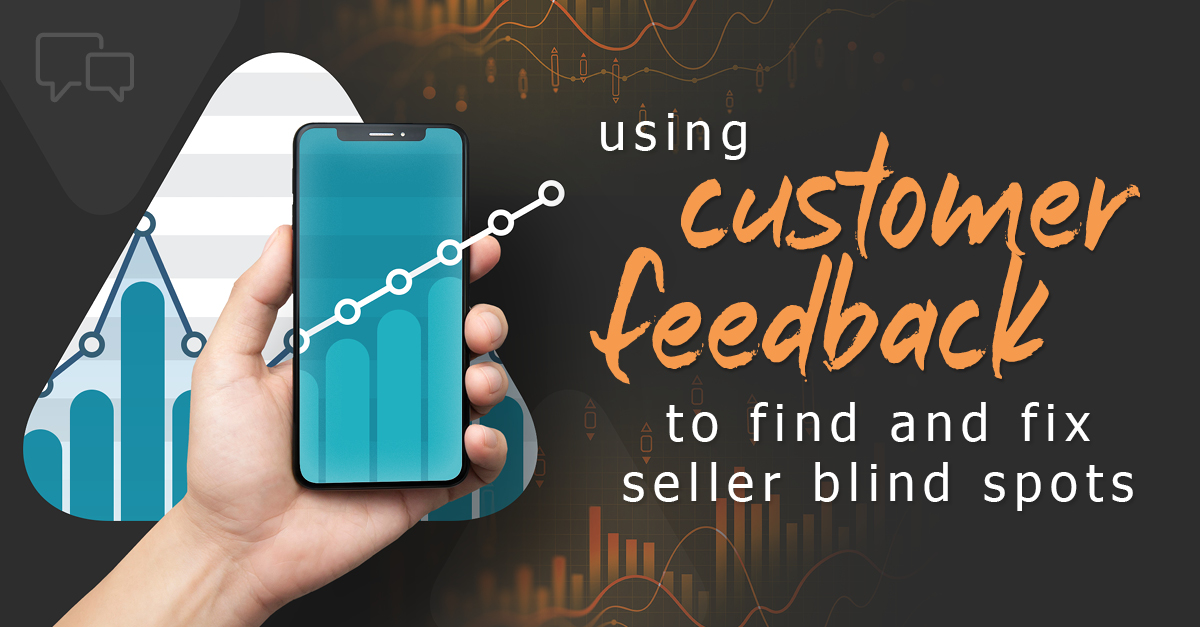
Fifty to 70 percent of the time, the reason your sellers think they lost a sale is different than the reason your buyers give.
In other words, your sellers don’t know why your buyers did or didn’t choose you more than half the time.
That’s data from Primary Intelligence—our newly-acquired win-loss-no decision analysis company—collected from years of gathering customer feedback from actual buyers in real-life sales conversations. And it shows how big a disconnect there really is between seller perception and buyer reality.
Why You Need Real-Time Customer Feedback
Customer feedback is invaluable for sales organizations that want to improve their seller’s skills and their sales process.
In fact, 53 percent of buyers say that a losing vendor could have won the deal. So your sellers could have won roughly half the deals they marked as “lost” if they did things differently.
What makes this really sting is the number one reason given by buyers for losing the deal, surpassing both price and product features, was a misstep in the sales experience.
When you understand what your prospect or customer actually thinks about the outcome of each deal, you can find blind spots in your approach that your sellers just can’t see.
Common Seller Blind Spots
Customer feedback data from Primary Intelligence found that:
- 24 percent of deals marked as “lost” to a competitor were actually “no decision” situations from the buyer’s perspective—they opted to take no action and stick with their status quo solution.
- 12 percent of deals that sellers thought were lost, the buyers were still actively considering them.
- 18 percent of deals that were marked as “no decision” situations were actually lost to a competitor.
If your sellers don’t understand the situation from your buyer’s perspective, they can’t take the appropriate next steps or adjust their approach for future sales.
Customer feedback is also helpful to understand whether your messages are standing out from your competitors’, given that:
- 35 percent of the time, buyers see no difference between you and your competition.
- 79 percent of the time, they only see a minimal difference.
In other words, your buyers are having trouble differentiating how your solution is better than your competitors’ in four out of every five deals.
There’s a clear disconnect between what your sellers think and what’s actually happening. Getting customer feedback can help bridge that gap and improve your sellers’ performance. But gathering that feedback hasn’t always been easy.
The Challenges of Getting Customer Feedback
The need for customer feedback is clear, but it has historically been hard to come by. Here are a few reasons why:
- Prospects and customers might not be candid with you if you ask for feedback directly.
- Following up with every decision maker is time-consuming and hard to justify when you have other sales that need your attention.
- You might not want to step on any toes if you’re planning to pitch to that company again in the future.
- Prospects and customers aren’t always inclined to respond to long surveys or take a follow-up meeting.
These challenges make it hard to spot patterns and blind spots in your sales process.
To make matters worse, feedback isn’t always useful by the time you gather it. Your sellers might have already made changes—approaching their conversations differently and rendering that feedback essentially useless.
The good news? Overcoming all these challenges is easier if you use the right customer feedback tool.
How to Get Customer Feedback at Scale
Using an automated win-loss-no decision analysis tool means you can ask for customer feedback as soon as each of your deals close (whether it’s won or lost). You obtain feedback more quickly than traditional methods. And you can then use the feedback you receive to provide timely, customized sales coaching based on identified performance weaknesses.
This isn’t just a snapshot in time. With the right tool, you can continually monitor, measure, and modify revenue performance seller-by-seller and deal-by-deal.
Watch this short video to learn how Primary Intelligence’s customer feedback tool works:
Sales teams that have implemented Primary Intelligence have seen a 60 percent average increase in their win rates.
When you understand what prospects and customers really think, you can use that feedback to provide personalized coaching to your sellers. Finding and fixing your sellers’ blind spots enables you to refine your messages, improve your approach, and win more deals.
Want to learn more about automated customer feedback? Watch this webinar replay.





